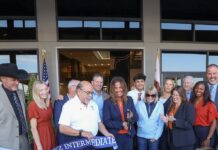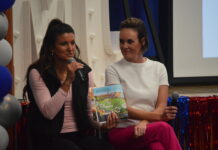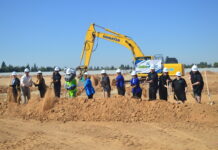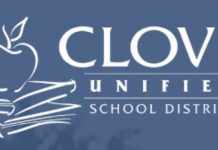
Harry Balfe (1860-1944) was a wealthy New York financier and CEO of the world’s largest wholesale grocery organization. During his New York business career, Balfe was selected by President Theodore Roosevelt to be his personal representative during the Panama Canal construction. President William Howard Taft also sent him to the Panama area. Balfe served as a commissary (food) contractor for Ellis Island for several years.
During WWI Balfe was invited by the Premier Georges Clemenceau of the French Republic to review the food allocated to the French army and French citizens. Lord Kitchener of England also sought Balfe’s commissary expertise.
In 1919 Balfe purchased 760 acres northeast of Herndon and Thompson from the Fresno Roeding Family. He invested over one million dollars to establish a seven room house, five guest houses, a private air strip, race track (bred thoroughbred horses), vineyard and orchards.
The landscaping included three terraced fish ponds, an aviary filled with pheasants, an Oriental garden, 400 rose bushes and a eucalyptus grove.
Balfe’s main interest was breeding blooded horses. It is believed he owned the finest thoroughbred horses in America. He won numerous blue ribbons, cups that were exhibited in his trophy room.
Actor Will Rogers and many other polo players purchased their best mounts from the Balfe ranch.
The National Geographic described his place: “A garden spot in the desert: a place which could not be duplicated in England in 100 years.” It would become the mecca for visitors from all parts of the world.
Balfe’s air strip was the only private landing field in Central California that was classified as a government emergency landing field. Movie stars that arrived by air included Fred MacMurray, Jack Holt, Jimmy Stewart, Myrna Loy, Edmund Low and Gary Cooper.
In 1933 Gary Cooper (1901-1961) married Balfe’s granddaughter Veronica (Rocky) Balfe. The New York society woman became an actress (Sandra Shaw stage name) while under the guardianship of famous film actress Delores Del Rio.
The once barren land that Balfe purchased would grow over 2,000 peach trees, 2,000 apricot trees, 3,500 almond trees, 1,000 orange trees, 90,000 Muscat grape vines, 20,000 Thompson (seedless) grape vines, fig orchard, alfalfa and wheat.
The success of the farm was attributed to a water pumping system (5,000 gallons per minute) that provided the underground and surface irrigation system.
Balfe created a private (one of the finest in California) museum of valuable Indian relics, souvenirs and antiques of the pioneer Western era. They were displayed in a specially built structure.
A wine cellar (located below the museum) was filled with homemade Muscat (oldest known grape variety) wine that was stored in 50 gallon barrels.
Pete Macias (arrived in Clovis late 1920’s) was superintendent of the ranch for eight years. He is quoted from an August 15, 1976 Fresno Bee article: “It was quite a place with something always going on. I started as a caterpillar driver in the depression and I guess Mr. Balfe liked me because he fired his Foreman and gave me the job. Then he asked me to bring my wife Emilia and my young daughters, Caroline and Sally to live on the ranch.”
His daughters would try on all the old fashioned pointed-toed shoes that were hanging from the rafters of the wine cellar. They were the only children on the ranch and Mrs. Balfe would take them (chauffeured car) to Fresno to purchase clothes.
Sally Macias Wright’s recollection of the Balfe ranch history was recorded at the “Let’s Talk Clovis” program on May 8, 2007. The DVD is available for review at the Clovis Museum.
The second part of the Balfe ranch will follow. Balfe and his ranch are an important part of our rich heritage.







